Comprehensive manipulation of glycosylation profiles across development scales
- PMID: 30252592
- PMCID: PMC6380396
- DOI: 10.1080/19420862.2018.1527665
Comprehensive manipulation of glycosylation profiles across development scales
Abstract
The extent and pattern of glycosylation on therapeutic antibodies can influence their circulatory half-life, engagement of effector functions, and immunogenicity, with direct consequences to efficacy and patient safety. Hence, controlling glycosylation patterns is central to any drug development program, yet poses a formidable challenge to the bio-manufacturing industry. Process changes, which can affect glycosylation patterns, range from manufacturing at different scales or sites, to switching production process mode, all the way to using alternative host cell lines. In the emerging space of biosimilars development, often times all of these aspects apply. Gaining a deep understanding of the direction and extent to which glycosylation quality attributes can be modulated is key for efficient fine-tuning of glycan profiles in a stage appropriate manner, but establishment of such platform knowledge is time consuming and resource intensive. Here we report an inexpensive and highly adaptable screening system for comprehensive modulation of glycans on antibodies expressed in CHO cells. We characterize 10 media additives in univariable studies and in combination, using a design of experiments approach to map the design space for tuning glycosylation profile attributes. We introduce a robust workflow that does not require automation, yet enables rapid process optimization. We demonstrate scalability across deep wells, shake flasks, AMBR-15 cell culture system, and 2 L single-use bioreactors. Further, we show that it is broadly applicable to different molecules and host cell lineages. This universal approach permits fine-tuned modulation of glycan product quality, reduces development costs, and enables agile implementation of process changes throughout the product lifecycle.
Keywords: ADC; DoE; feed additives; glycosylation; media development; multivariate analysis; product quality; scalability.
Figures
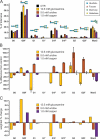
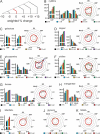

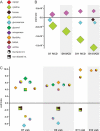
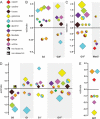

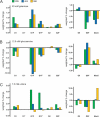
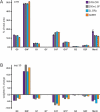
Similar articles
-
N-Glycosylation modulators for targeted manipulation of glycosylation for monoclonal antibodies.Appl Microbiol Biotechnol. 2025 Jan 22;109(1):16. doi: 10.1007/s00253-025-13405-5. Appl Microbiol Biotechnol. 2025. PMID: 39841264 Free PMC article.
-
Modulation and modeling of monoclonal antibody N-linked glycosylation in mammalian cell perfusion reactors.Biotechnol Bioeng. 2017 Sep;114(9):1978-1990. doi: 10.1002/bit.26315. Epub 2017 May 23. Biotechnol Bioeng. 2017. PMID: 28409838
-
Sustaining an efficient and effective CHO cell line development platform by incorporation of 24-deep well plate screening and multivariate analysis.Biotechnol Prog. 2018 Jan;34(1):175-186. doi: 10.1002/btpr.2584. Epub 2017 Dec 1. Biotechnol Prog. 2018. PMID: 29150912
-
The Formidable Challenge of Controlling High Mannose-Type N-Glycans in Therapeutic mAbs.Trends Biotechnol. 2020 Oct;38(10):1154-1168. doi: 10.1016/j.tibtech.2020.05.009. Epub 2020 Jun 29. Trends Biotechnol. 2020. PMID: 32616303 Review.
-
N-Glycosylation Design and Control of Therapeutic Monoclonal Antibodies.Trends Biotechnol. 2016 Oct;34(10):835-846. doi: 10.1016/j.tibtech.2016.02.013. Epub 2016 Mar 22. Trends Biotechnol. 2016. PMID: 27016033 Review.
Cited by
-
N-Glycosylation modulators for targeted manipulation of glycosylation for monoclonal antibodies.Appl Microbiol Biotechnol. 2025 Jan 22;109(1):16. doi: 10.1007/s00253-025-13405-5. Appl Microbiol Biotechnol. 2025. PMID: 39841264 Free PMC article.
-
Strategies to control therapeutic antibody glycosylation during bioprocessing: Synthesis and separation.Biotechnol Bioeng. 2022 Jun;119(6):1343-1358. doi: 10.1002/bit.28066. Epub 2022 Feb 28. Biotechnol Bioeng. 2022. PMID: 35182428 Free PMC article. Review.
-
Modular development enables rapid design of media for alternative hosts.Biotechnol Bioeng. 2022 Jan;119(1):59-71. doi: 10.1002/bit.27947. Epub 2021 Oct 18. Biotechnol Bioeng. 2022. PMID: 34596238 Free PMC article.
-
Enhancing monoclonal antibody production efficiency using CHO-MK cells and specific media in a conventional fed-batch culture.Cytotechnology. 2025 Feb;77(1):1. doi: 10.1007/s10616-024-00669-4. Epub 2024 Nov 18. Cytotechnology. 2025. PMID: 39568575
-
Antibody Structure and Function: The Basis for Engineering Therapeutics.Antibodies (Basel). 2019 Dec 3;8(4):55. doi: 10.3390/antib8040055. Antibodies (Basel). 2019. PMID: 31816964 Free PMC article. Review.
References
-
- Shinkawa T, Nakamura K, Yamane N, Shoji-Hosaka E, Kanda Y, Sakurada M, Uchida K, Anazawa H, Satoh M, Yamasaki M, et al. The absence of fucose but not the presence of galactose or bisecting N-acetylglucosamine of human IgG1 complex-type oligosaccharides shows the critical role of enhancing antibody-dependent cellular cytotoxicity. J Biol Chem. 2003;278(5):3466–3473. doi:10.1074/jbc.M210665200. - DOI - PubMed
MeSH terms
Substances
LinkOut - more resources
Full Text Sources
Other Literature Sources
